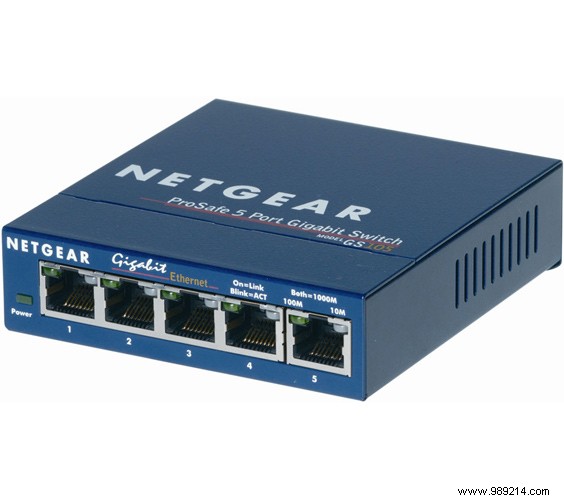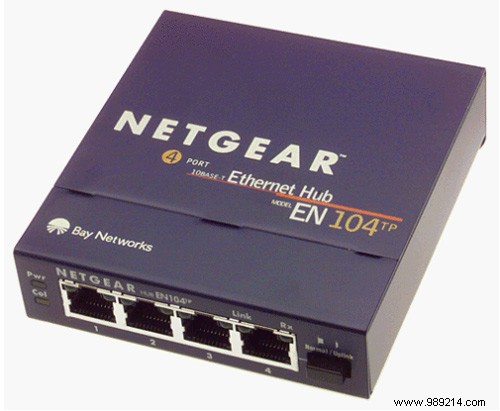You're running out of Ethernet ports and want to turn one Ethernet cable into two. The first thing that comes to mind is probably Ethernet splitting. As the name suggests, this is the process of splitting an Ethernet connection into two.
ContentsEthernet SplitterEthernet SwitchEthernet HubWhy not try an alternative?1. Mesh Wi-Fi2. Ethernet over power line (EOP)3. MoCAIf you decide to split your Ethernet connection, you have a few options:hub, splitter, or switch. Each solution has something different to offer, so before buying a gadget, it is important to identify which one has the most to offer you.
Here we explain the different Ethernet splitting options so you know which solution is right for you.
Let's start with what you were probably most tempted to just miss and buy when looking to turn one Ethernet connection into many. (Hint:don't! )

Essentially, one Ethernet port becomes multiple ports. Switches give incoming data from your network devices their own paths. This means that data between devices does not interfere with each other.
The switches allow full-duplex communication between devices, which means data can be sent and received at the same time, resulting in a faster network.
The good thing is that Ethernet switches aren't expensive either. You should be able to pick up an ethernet switch for around $15.
Last and probably least is the Ethernet hub, which has been pretty much overtaken by the Switch. If a switch creates pathways for packets to communicate with your router, think of a hub as a vast chamber filled with network traffic, where packets come in and scream to find the devices they're trying to connect to. In more technical terms, hubs cannot allow devices to send and receive data at the same time, which is called half-duplex communication.

This leads to deadlocks and data collisions, hogging valuable bandwidth and causing network slowdown, especially when using multiple devices simultaneously.
Note that Ethernet hubs look pretty much exactly like switches, so don't make the mistake of buying a hub when you really want a switch.
If you want to connect multiple devices, a network cable is just one option. There are several methods to share the same signal between multiple devices, including some Wi-Fi options.
Here are three alternatives to the traditional network splitter:
Rather than broadcasting Wi-Fi signals from a single point, mesh Wi-Fi routers have multiple access points, sometimes called satellites. These satellites pick up the signal from the router and retransmit it.
Since the hotspots all broadcast the same signal, you don't have to switch Wi-Fi connections when moving from one hotspot to another. If you regularly experience Wi-Fi dead zones in your home or office, you may be an ideal candidate for mesh Wi-Fi. Popular mesh router solutions include those from Google Nest Wifi, Netgear Orbi, and eero.
An EOP is where you transfer data for an internal network (LAN) using a building's existing power cables.
An EOP consists of a transmitter and a receiver. Plug the transmitter into a power outlet, then use an Ethernet cable to connect the transmitter to your router. Plug the receiver into a power outlet and use an Ethernet cable to connect the receiver to your device.
The EOP transmitter converts the signal into the high frequency range on the electrical wiring, and the receiver demodulates this signal. This creates a physical connection between your Ethernet-enabled device and your router, without the need for additional cables. Assuming you purchase compatible EOP adapters, you can set up multiple receivers in your home or office.
If you installed coaxial cables, you can use a MoCA Adapter to send Ethernet signals over your existing cabling. If your home was wired for cable TV, you will usually already have coaxial cabling. This means you can potentially connect a MoCA adapter to your router and another near a coax port in every room where you want to access the internet.
If you need to connect additional devices via coaxial cable, you can also use a coaxial splitter.
Now that you know the differences between an Ethernet switch, hub, and splitter, you'll know which one is right for you. In most cases, we'll recommend the Ethernet switch, as it truly is the most versatile solution. If you are a gamer, also check if Ethernet or Wi-Fi is more suitable for gaming.